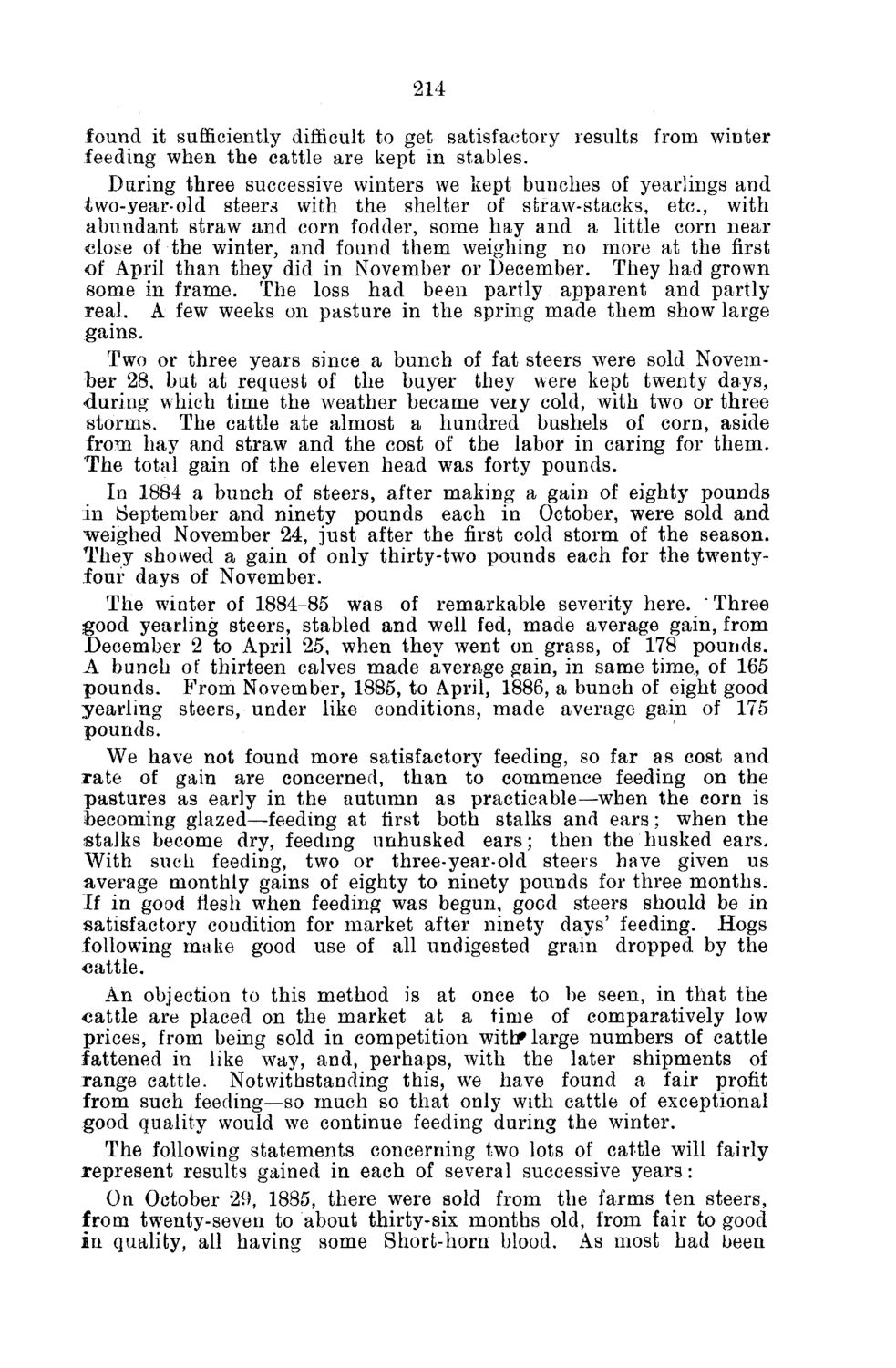| |
| |
Caption: Board of Trustees Minutes - 1886
This is a reduced-resolution page image for fast online browsing.

EXTRACTED TEXT FROM PAGE:
214 found it sufficiently difficult to get satisfactory results from winter feeding when the cattle are kept in stables. During three successive winters we kept bunches of yearlings and two-year-old steers with the shelter of straw-stacks, etc., with abundant straw7 and corn fodder, some hay and a little corn near close of the winter, and found them weighing no more at the first of April than they did in November or December. They had grown some in frame. The loss had been partly apparent and partly real. A few weeks on pasture in the spring made them show large gains. Two or three years since a bunch of fat steers were sold November 23, but at request of the buyer they were kept twenty days, during which time the weather became veiy cold, with two or three storms. The cattle ate almost a hundred bushels of corn, aside from hay and straw and the cost of the labor in caring for them. The total gain of the eleven head was forty pounds. In 1884 a bunch of steers, after making a gain of eighty pounds in September and ninety pounds each in October, were sold and weighed November 24, just after the first cold storm of the season. They showed a gain of only thirty-two pounds each for the twentyfour days of November. The winter of 1884-85 was of remarkable severity here. "Three good yearling steers, stabled and well fed, made average gain, from December 2 to April 25, when they went on grass, of 178 pounds. A bunch of thirteen calves made average gain, in same time, of 165 pounds. From November, 1885, to April, 1886, a bunch of eight good yearling steers, under like conditions, made average gain of 175 pounds. We have not found more satisfactory feeding, so far as cost and rate of gain are concerned, than to commence feeding on the pastures as early in the autumn as practicable—when the corn is becoming glazed—feeding at first both stalks and ears; when the stalks become dry, feeding unhusked ears; then the husked ears. With such feeding, two or three-year-old steers have given us average monthly gains of eighty to ninety pounds for three months. If in good flesh when feeding was begun, good steers should be in satisfactory condition for market after ninety days' feeding. Hogs following make good use of all undigested grain dropped by the cattle. An objection to this method is at once to be seen, in that the cattle are placed on the market at a time of comparatively low prices, from being sold in competition with* large numbers of cattle fattened in like way, and, perhaps, with the later shipments of range cattle. Notwithstanding this, we have found a fair profit from such feeding—so much so that only with cattle of exceptional good quality would we continue feeding during the winter. The following statements concerning two lots of cattle will fairly represent results gained in each of several successive years: On October 29, 1885, there were sold from the farms ten steers, from twenty-seven to about thirty-six months old, from fair to good in quality, all having some Short-horn blood. As most had been
| |